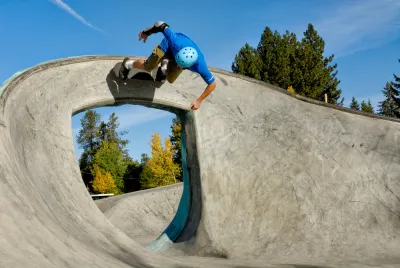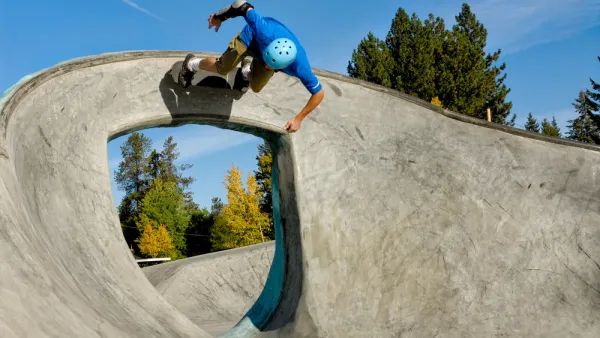More cities around the country are embracing skateparks as a vital part of park design, leading to a new wave of urban design standards tailored for skateboarders.

As Cassie Owens writes on Next City, the proliferation of skate parks around the country marks the surge of skateboarders becoming more civically engaged that want to take urban design seriously. In Owens word, "the kids who clung to their boards in the ’80s and ’90s have grown up, some of them into advocates." This advocacy is seen all across the United States as various cities such as San Antonio, Seattle, Portland, and Philadelphia begin designing skate plaza programs, skate spots, and even skateboard routes.
With upwards of 12 million skaters in the US according to market research firm Board-Trac, these suburban and urban dwellers are looking for legal spots to practice their craft. Even though skating activists often have to push state, city, and private funders to raise millions of dollars for these projects (as in the case of Franklin's Paine Skatepark in Philadelphia), cities see these investments as ways to potentially curtail illegal, unauthorized skating.
However, many times these design implementations can be simple fixtures less than 1,500 ft. Indeed, Owens illustrates how the, "range of design options allow planners to start small when cash-strapped and reach audiences outside of teens with dreams of making the X Games. And with the diversity found among skateboarders, building a new bowl in the neighborhood may not stir fears of gentrification as other projects might."
FULL STORY: “Skateboard Urbanism” Could Change Park Planning

National Parks Layoffs Will Cause Communities to Lose Billions
Thousands of essential park workers were laid off this week, just before the busy spring break season.

Retro-silient?: America’s First “Eco-burb,” The Woodlands Turns 50
A master-planned community north of Houston offers lessons on green infrastructure and resilient design, but falls short of its founder’s lofty affordability and walkability goals.

Delivering for America Plan Will Downgrade Mail Service in at Least 49.5 Percent of Zip Codes
Republican and Democrat lawmakers criticize the plan for its disproportionate negative impact on rural communities.

Test News Post 1
This is a summary

Test News Headline 46
Test for the image on the front page.

Balancing Bombs and Butterflies: How the National Guard Protects a Rare Species
The National Guard at Fort Indiantown Gap uses GIS technology and land management strategies to balance military training with conservation efforts, ensuring the survival of the rare eastern regal fritillary butterfly.
Urban Design for Planners 1: Software Tools
This six-course series explores essential urban design concepts using open source software and equips planners with the tools they need to participate fully in the urban design process.
Planning for Universal Design
Learn the tools for implementing Universal Design in planning regulations.
EMC Planning Group, Inc.
Planetizen
Planetizen
Mpact (formerly Rail~Volution)
Great Falls Development Authority, Inc.
HUDs Office of Policy Development and Research
NYU Wagner Graduate School of Public Service




























